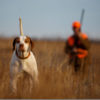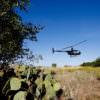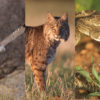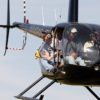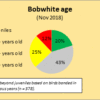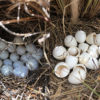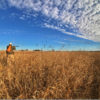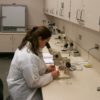
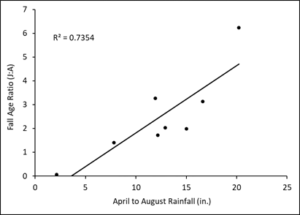 No one questions the importance of rainfall for bobwhite and scaled quail in west Texas. Studies in south Texas conclude that 94% of the variation in age ratios (a measure of productivity) is determined by April-August rainfall. Our data from RPQRR (2008-18) also suggest a strong relationship where Apr-Aug rainfall accounts for about 74% of the variation in age ratios (Kubecka 2018). The drought conditions that reigned (pun intended) from Sept 2017 thru Sept 18 likely condemned our quail crop. Perhaps it was a conspiracy. Concurrent with the drought was a bust in small mammals (e.g., cotton rats), perhaps a lag effect in predator reproduction, and a geriatric quail population that was riddled with eyerworms and cecal worms. We’ve raised basically no chicks for the past two summers. The cold rains of October (which doubled our annual YTD rainfall) snuffed out whatever late (Sept) hatch that we may have had in place.
No one questions the importance of rainfall for bobwhite and scaled quail in west Texas. Studies in south Texas conclude that 94% of the variation in age ratios (a measure of productivity) is determined by April-August rainfall. Our data from RPQRR (2008-18) also suggest a strong relationship where Apr-Aug rainfall accounts for about 74% of the variation in age ratios (Kubecka 2018). The drought conditions that reigned (pun intended) from Sept 2017 thru Sept 18 likely condemned our quail crop. Perhaps it was a conspiracy. Concurrent with the drought was a bust in small mammals (e.g., cotton rats), perhaps a lag effect in predator reproduction, and a geriatric quail population that was riddled with eyerworms and cecal worms. We’ve raised basically no chicks for the past two summers. The cold rains of October (which doubled our annual YTD rainfall) snuffed out whatever late (Sept) hatch that we may have had in place.
There is no joy in Mudville. We’ll conduct our annual March helicopter counts, and I’ll be surprised (pleasantly) if it’s not our lowest on record.
Let’s study the rainfall situation a bit more. Below (labeled A-E) are five years of rainfall data from RPQRR graphed against the 10-yr average. Study the graphs (I’ve omitted the year for now, and the y-axis label which is rainfall in inches). Now, “you make the call” as to what you see, do you think the corresponding season’s quail abundance was “poor”, “fair”, “good”, or “excellent.” Which year was best? Worst? Can you rank them from worst to best? I’ll provide the years in the last paragraph of the newsletter, but don’t cheat on your analysis.
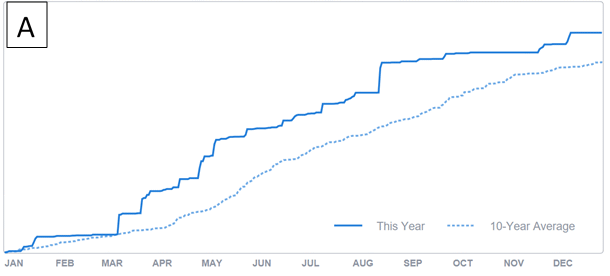
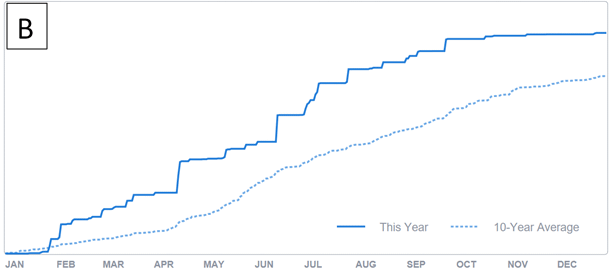
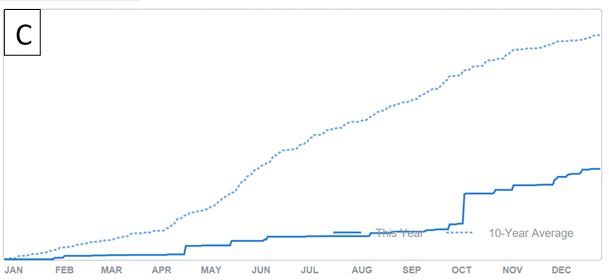
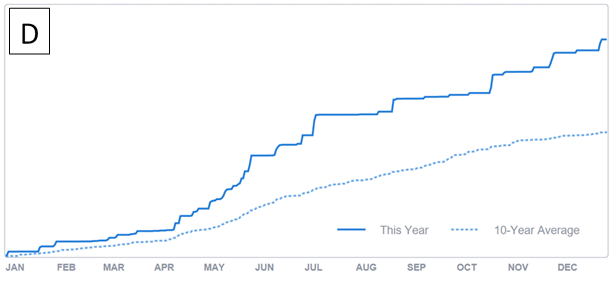
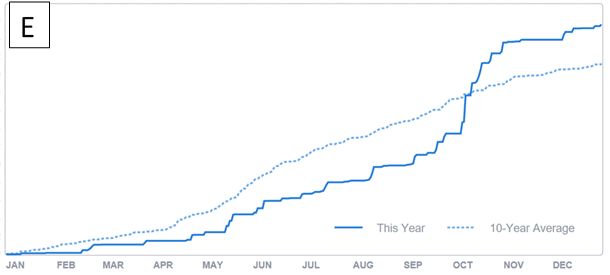
Rainfall graphs
A = 2007
B = 2010
C = 2011
D = 2015
E = 2018
Worst year: 2011 (C); 2018 (E) as bad, perhaps worse
Best year: D (2015)
Enigma year: 2010 (B); it rained but we didn’t have quail.
Worst to Best: 2011 – 2018 – 2010 –2007 – 2015
Of note: The real outlier here is 2010; that’s the year we decided to pursue “Operation Idiopathic Decline” as rainfall did not appear to be the magic wand it was in 2015.
If you have comments, send them to drollins@quailresearch.org; I’ll collate them and discuss in the March e-Quail.


